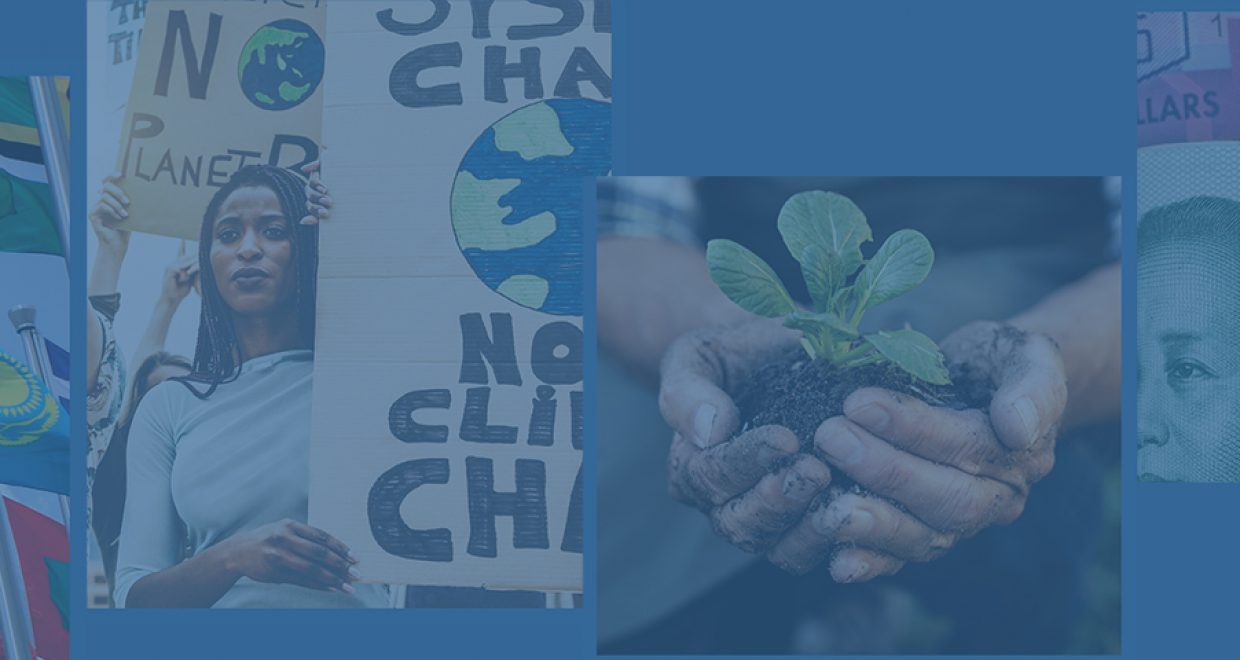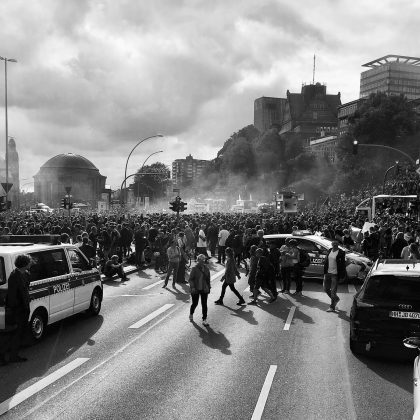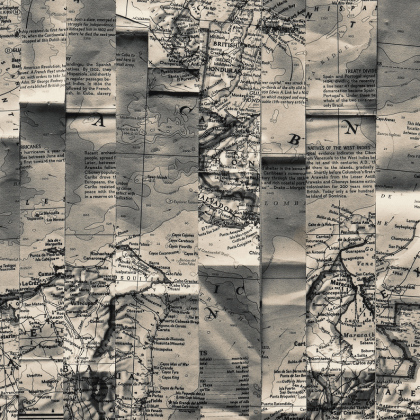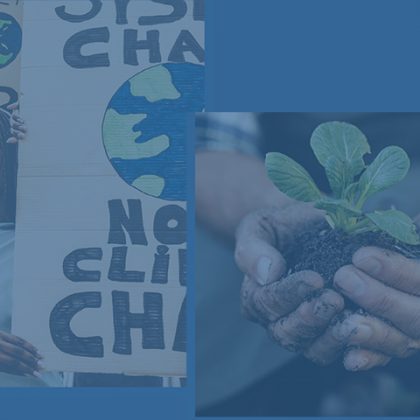Conversations with Authors: Re-examining the Effects of Refugees on Civil Conflict
In this “Conversation with Authors,” we spoke with Yang-Yang Zhou and Andrew Shaver, the authors of an APSR article titled “Re-examining the Effects of Refugees on Civil Conflict: A Global Subnational analysis.”
APSR: Can you discuss the aims of your paper–what was the genesis of this piece?
YZ (Yang-Yang Zhou): In grad school, Andrew and I were reading in the literature about this concern that hosting refugees would make the place where refugees are staying more insecure—whether that’s more conflict, more crime, more riots, etc. And we also saw that this literature was taken up by policymakers justifying not taking in more refugees, because of the possibility that their presence will lead to conflict.
So the genesis of this paper is that we were in a quantitative methods course together where the assignment was to do a replication of a paper and extend that paper into something else. We took that class in 2013—a very long road! We started off by replicating a 2006 article by Salehyan and Gleditsch in International Organization where they find this positive association between numbers of refugees a country is hosting from neighboring countries and the likelihood of new conflict breaking out. They see that those two things are correlated, but they also recognize that this might not be a causal story—there could be lots of reasons for this positive association. And they were extremely generous when we, two grad students, emailed them for their data, and had questions for them, which allowed us to do this replication and extension.
Nevertheless, we were concerned that their findings would be interpreted causally by policymakers, and we wondered if the relationship was indeed causal. We replicated their paper by extending it further into more recent years—and, actually, in the appendix of this paper, we show that there’s perhaps a difference between the positive association that they found being largely driven by the Cold War period. In the contemporary post-Cold War period, we do not see a positive association between refugee numbers and new conflict.
Around this same time, Alex Aleinikoff, who was United Nations Deputy High Commissioner for Human Rights, came to give a talk at our university. And I basically cornered him after the talk and asked: how can I get more fine-grained data of exactly where refugees are hosted? If the concern is that refugees directly generate conflict, we should be able to test that at the subnational level. And so I was put in touch with the UNHCR Operational Data Systems and Support section (ODSS), and we’ve been working closely with them ever since.
APSR: You mention that some previous findings were picked up by policymakers. Did you ever have the fear that you might find something with troubling normative implications? How do you think about the possible implications of what may come of your research?
AS (Andrew Shaver): This is a really important question. I have a couple thoughts on this. One is to the extent that we can actually hone in on some objective truth, or to the extent that we can at least aggregate as much evidence as possible toward that truth, I think ultimately that’s the objective we should pursue. And then, second, the question normatively becomes: given what the preponderance of evidence suggests, what do we do with this? I think that’s more important than worrying about potential normative implications ex-ante.
One way to think about this is an example in our work here. There are still some implications of this work that caused us some discomfort – one potential implication, or reading of our work, could be something to the effect of, “When individuals are put into camps or a specific part of the country, conflict likelihood goes down.” And that could be construed as a sort of optimal policy. And we want to be very, very clear that we are not advocating for an encampment policy, and, in fact, there are lots of really good reasons not to do that.
So without judging the conclusion we arrived at, the normative side of this is to think about it in a way that takes people’s well-being into account. The conclusion of our research is not an encampment policy or to promote that, but instead to point out that what seems to really work in terms of reducing conflict likelihood and generally improving the human condition is to really concentrate aid resources and the provision of resources to a given population and to potentially make sure that those resources are distributed, not only to refugees and asylum seekers, but to host communities in a mutually beneficial way. But, to arrive to the conclusion in the first place, it required inquiry into the broader question.
APSR: Was there something that most surprised, confounded or excited you as you were writing this article?
AS: I think for me the answer is super clear. It was less of a single moment, but what was really exciting and reassuring for me was the review process in general—both through the journal review process and more broadly — including through engagement with our advisors who continued to give us difficult feedback—including Robert Keohane, who pushed us especially hard to think about this article in a number of ways. And what occurred was that as we expanded our set of empirical tests, brought in additional data sources, explored potential heterogeneous treatment effects, and so on, was that that we found our initially results and broader expectations to be continually confirmed. And this was especially gratifying as we become more confident in what we were seeing.
YZ: We set off thinking after generating our first set of empirical results this was going to be a null results paper, and we were very happy with that. As we thought a little bit more about what happens when refugees are hosted and under certain conditions, and looking at heterogeneous treatment effects, it was really interesting that we found these rather large substantive negative effects of hosting on conflict. That is, these places got safer. We were not expecting to see that. And as Andrew mentioned, we started off this project with one set of data on conflict, the UCDP Conflict data set. And because the publication process took so many years, a lot of reviewers would say, “Oh, have you checked out this new data set on conflict?” So we thought if we don’t publish this, we will have to keep incorporating new data on conflict! But whenever we incorporated a new data set and different ways of measuring conflict, the results were consistent. And we thought that was just incredible; I think it really helps solidify in our minds that we can be confident about our findings.
APSR: This actually leads into one of the questions I had for the substantive implications of the piece—is there a reason that you focus on the outbreak of armed conflict instead of other types of violence, like riots or lower levels of violence?
YZ: Partially the reason we focused on armed conflict was that large-scale data was available—but you’re right, it doesn’t stop there. Our next paper uses data from the Armed Conflict Location and Event Data Project (ACLED) to look at other forms of violence and nonviolent social conflict events like protests. When we started our first paper, this data just didn’t exist globally—ACLED for instance was only Africa and Asia for certain years. Whereas now it’s at the global level, and we will be adding better data on the refugee locations themselves like population data, population by origin country, etc.
AS: One thing to emphasize is there are some really important academic discussions that relate much more to civil war or insurgency. For example, the Salehyan and Gleditsch article itself really engages with the phenomenon of civil war diffusion. That is, why is it that empirically there seems to be this pattern of a country that borders another country experiencing civil war itself then having a much higher likelihood of experiencing civil war? And a lot of literature spoke to the outbreak of some pretty significant types of conflict involving refugees—existing civil war insurgencies that were spilling over into camps, which were potentially being used to host combatants and rebels. So I think there’s an important history of debate and academic inquiry around this sort of much more significant type of violence, which deserved the attention that hopefully we’ve given it.
APSR: One of the mechanisms you mention that might be driving this negative effect of refugee settlement on levels of conflict is that refugee settlements draw more attention from human rights groups and the state. So, you get an increase in state capacity and resource allocation that drives down conflict. Andrew mentioned above that a potential read on this is that institutionalizing the camps might drive down levels of conflict, but of course that does not integrate refugees fully into their host countries. How do you think states can move from just limiting violence to integration?
YZ: In our paper, I would say that we’re finding under conditions where refugees are geographically concentrated—hosted in camps, hosted for a long time—that’s when we see the negative effects on conflict, precisely because that’s where we think infrastructural improvements and development is happening. That doesn’t mean, moving forward, that this is the only condition under which infrastructure and development happens. I think it just means that historically this is how refugees have been hosted, largely because host governments have wanted it that way, and because the UNHCR was fine with it as well. But since the 2018 Global Compact on Refugees, there’s been a major shift on how the UNHCR, World Bank, and some host governments are conceptualizing how to host refugees. There’s this recognition that refugees often stay for a very long time. We think of refugees as temporary—that they should be in these temporary camps for a few months, then they go back home. That’s not the reality—in Africa, at least the average age of a refugee settlement is ten years (with lots of variation). And to be enclosed in an institutionalized setting in a camp is not great for these vulnerable populations.
I have a new working paper with Guy Grossman in which we examine the effects of hosting refugees on development in Uganda. Uganda is a really interesting setting. It’s an authoritarian regime that has been known to be quite progressive in its refugee hosting. Refugees self-settle, so they’re not living in camps, and they have land to farm and access to social services like public schools and healthcare. And what we find is that refugee exposure has led to substantively large improvements in public goods access for Ugandans living near refugees. For these Ugandan communities, they have more schools, their access to healthcare gets better, their roads improve. Both refugees and host populations benefit from this setting where refugees aren’t enclosed in camps. So, development can happen in other types of situations if hosting policy is set up that way.
APSR: You alluded to this earlier, but what’s next in this project or related projects? What did this piece inspire, and where can we expect to see you see you next? What questions are you going to be tackling?
YZ: Andrew and I are working on a data set where we not only have locations of refugees and asylum seekers—latitude and longitude coordinates—but we actually know for each of these locations across time what the population is, how many refugees there are, demographics of men versus women, adults versus children, origin country, etc. This will give us a much better picture of who these refugee communities are.AS: I’ve been working with my research lab, the Political Violence Lab, where again we are very grateful to the UNHCR for continuing to supply new data to advance important research on refugee flows. The data that’s been available historically have been refugee stocks from which scholars have attempted to estimate or back outflow estimates, but it turns out that’s a pretty sort of noisy way of doing it. So, we’ve taken this newly released data on flows per directed dyad per year to really go back and replicate at this point two or three decades on the causes and consequences of refugee flows.
– Yang-Yang Zhou, University of British Columbia
– Andrew Shaver, University of California, Merced
– The authors’ APSR paper is publish as open access.






